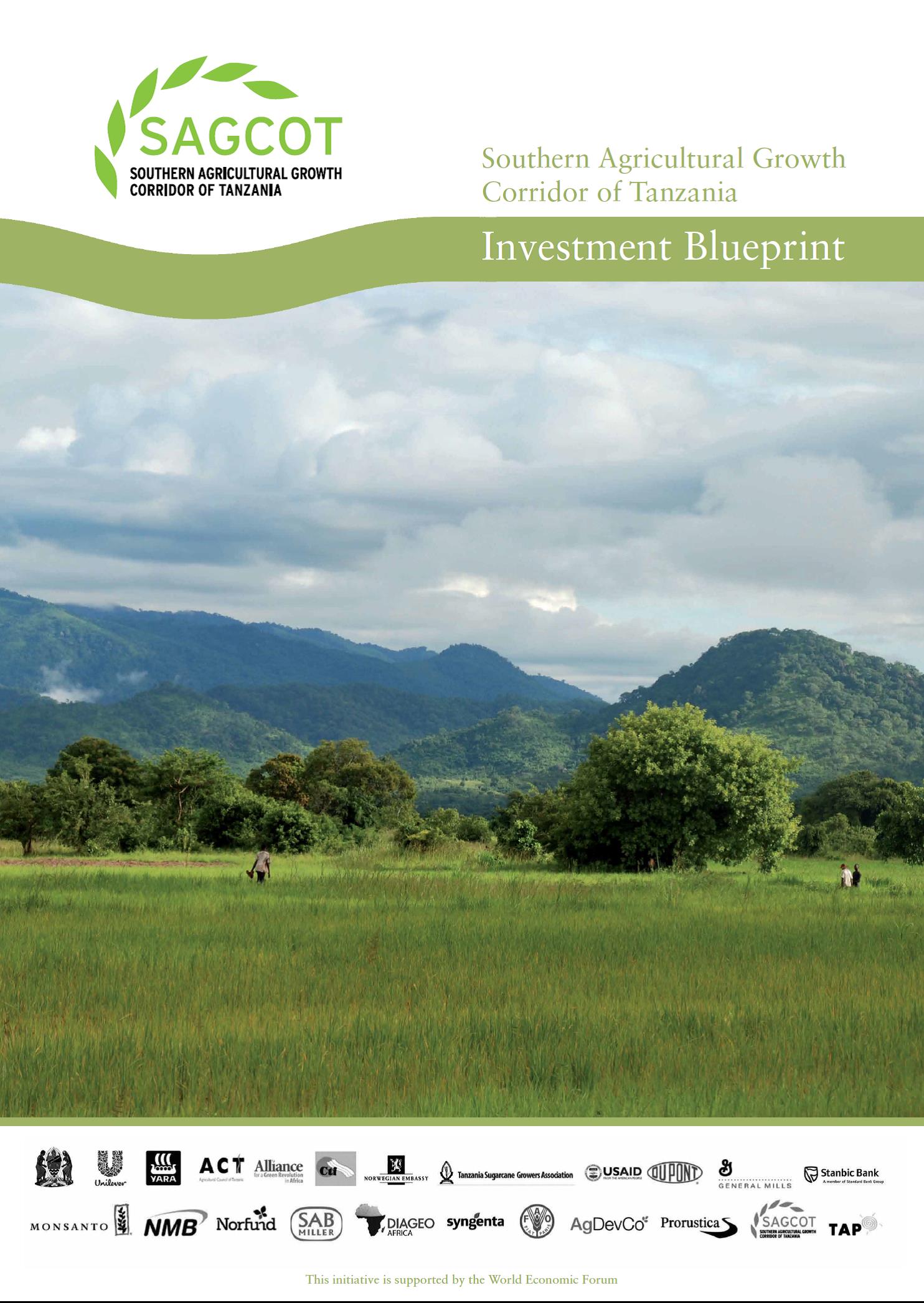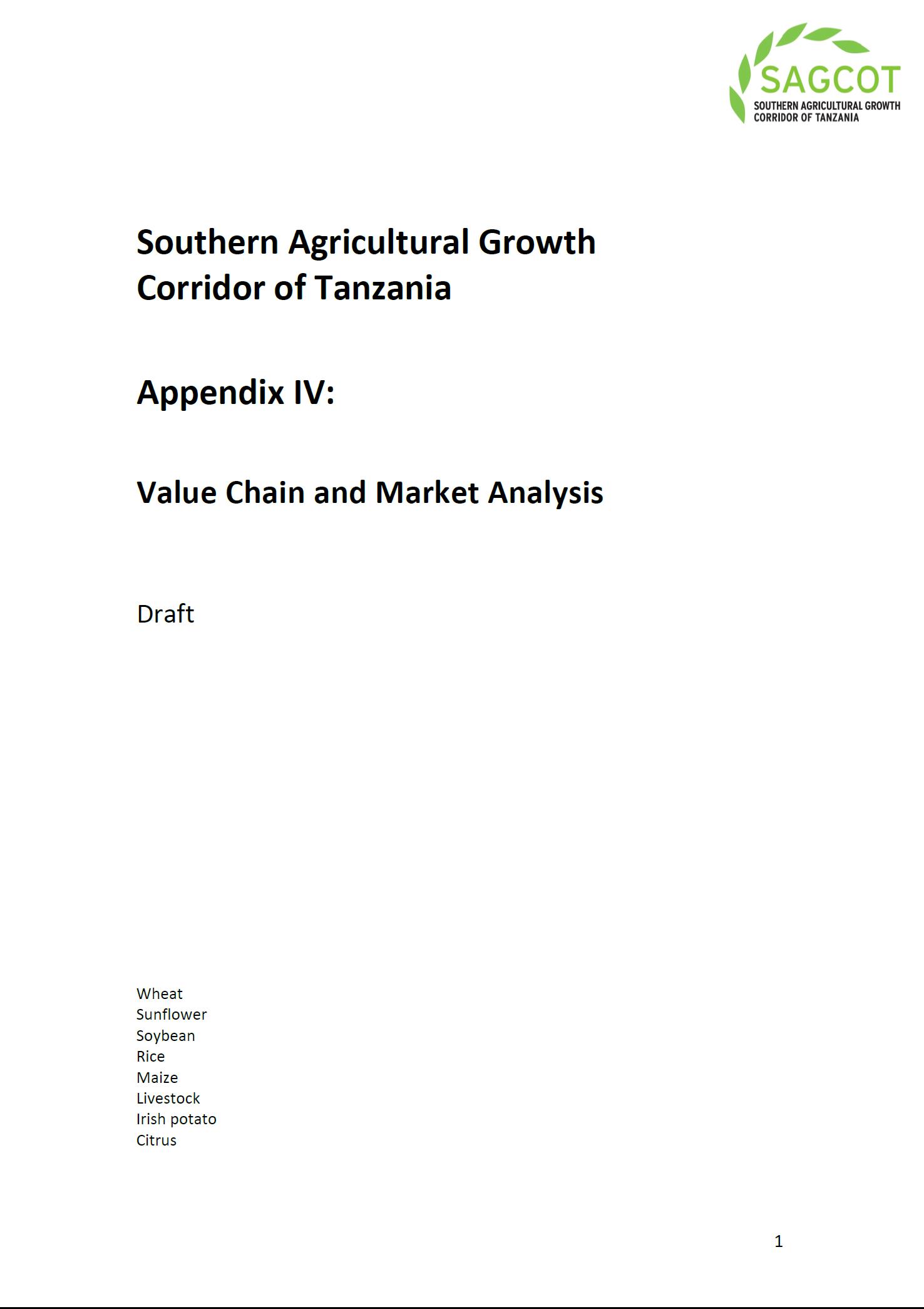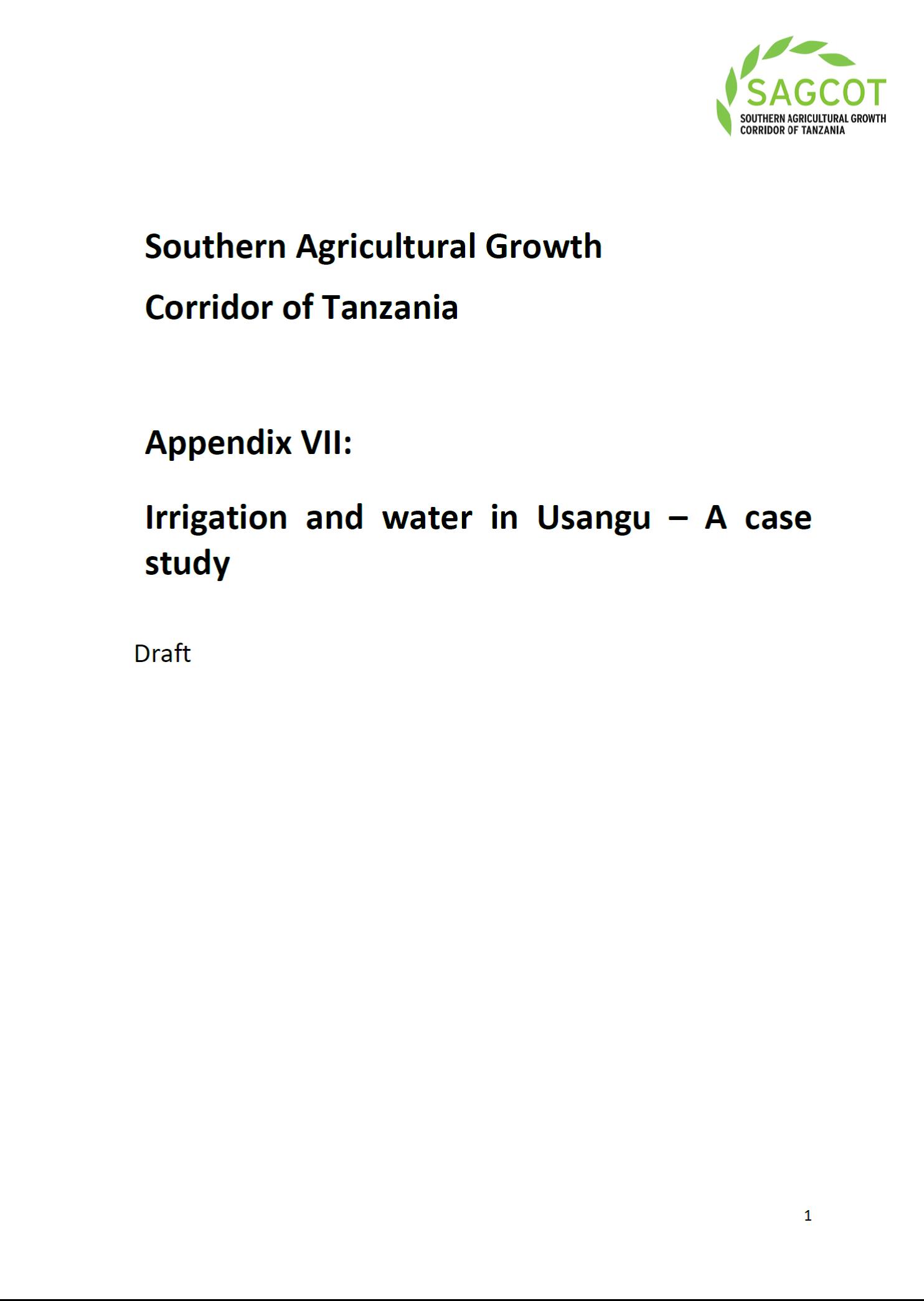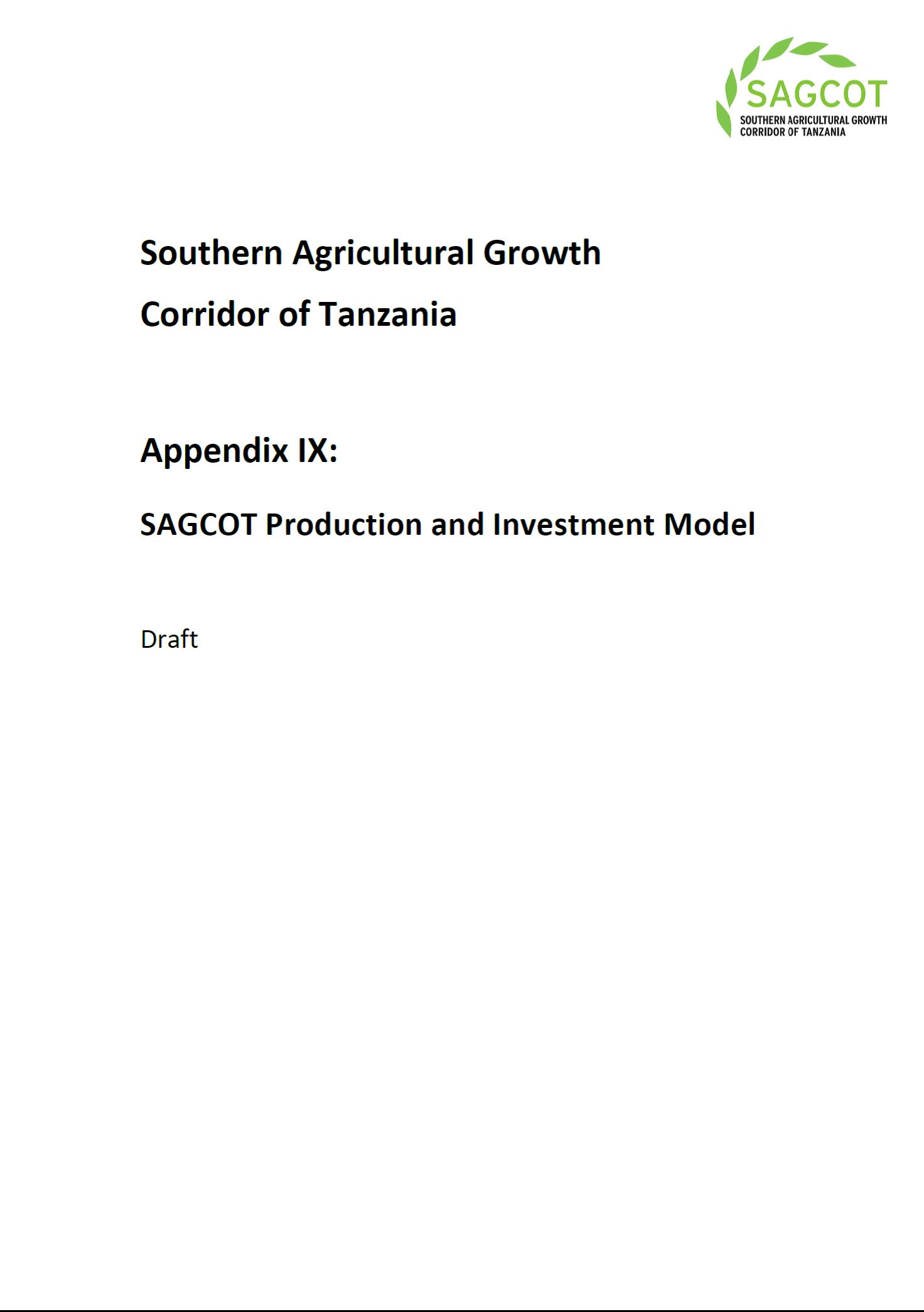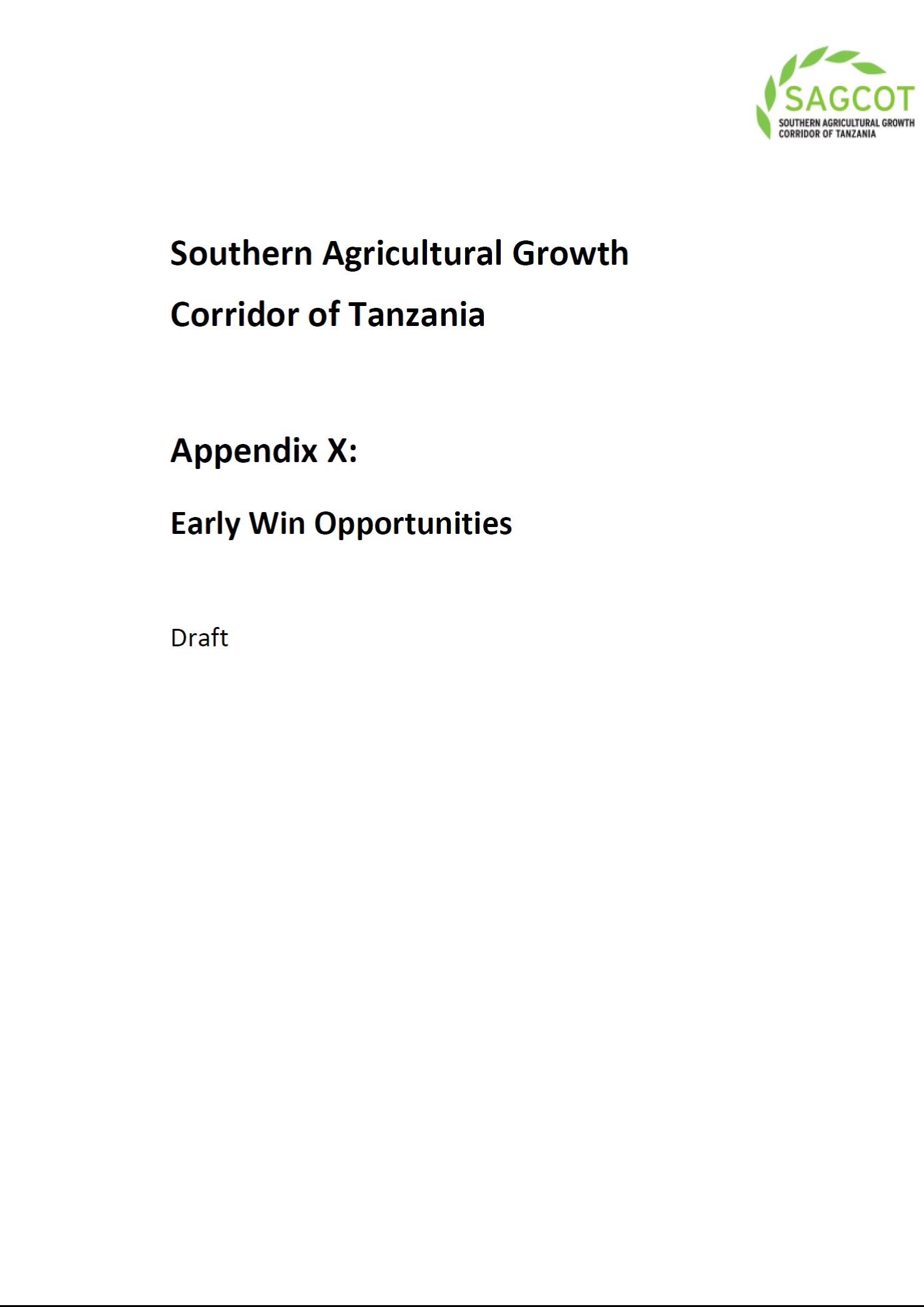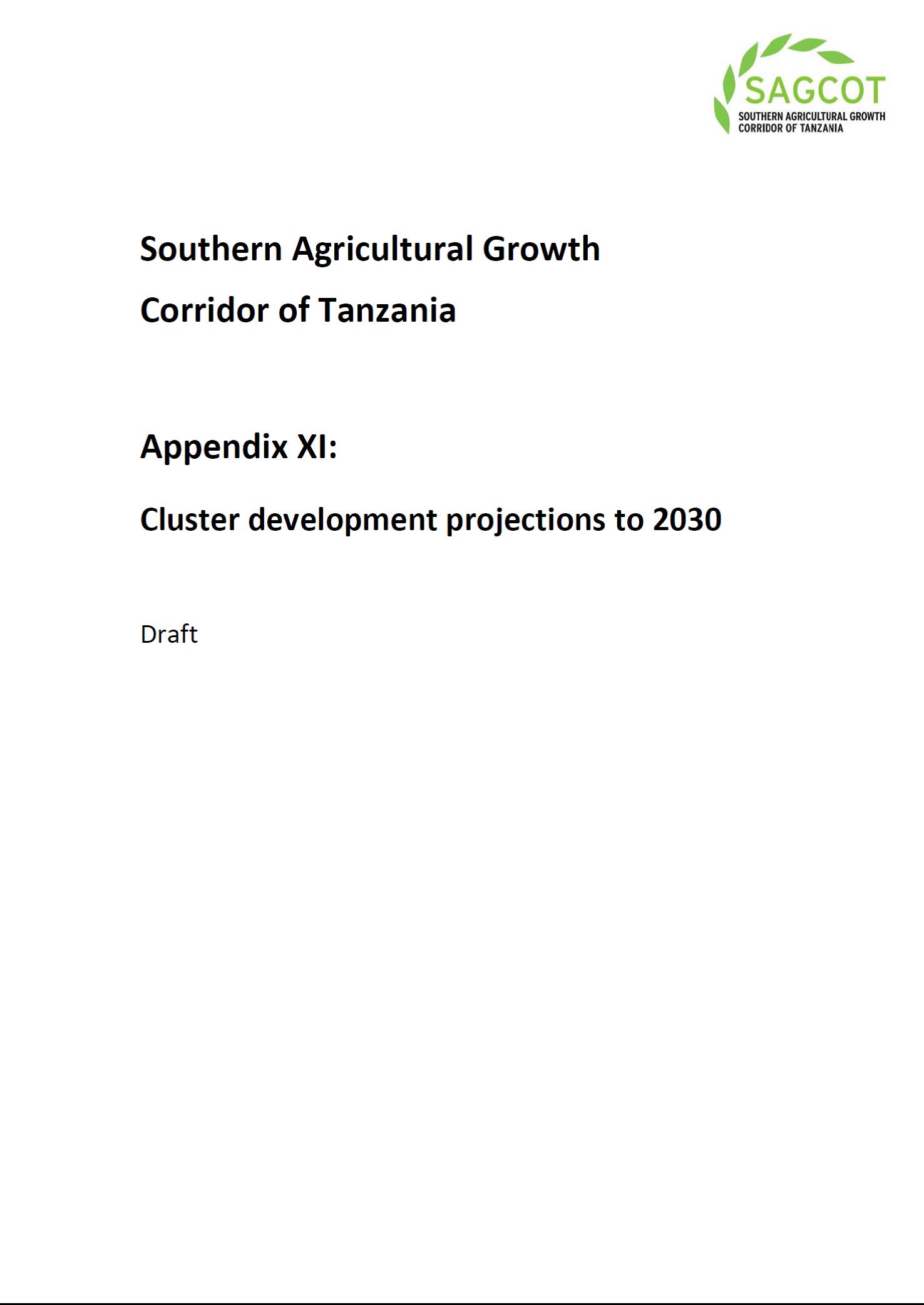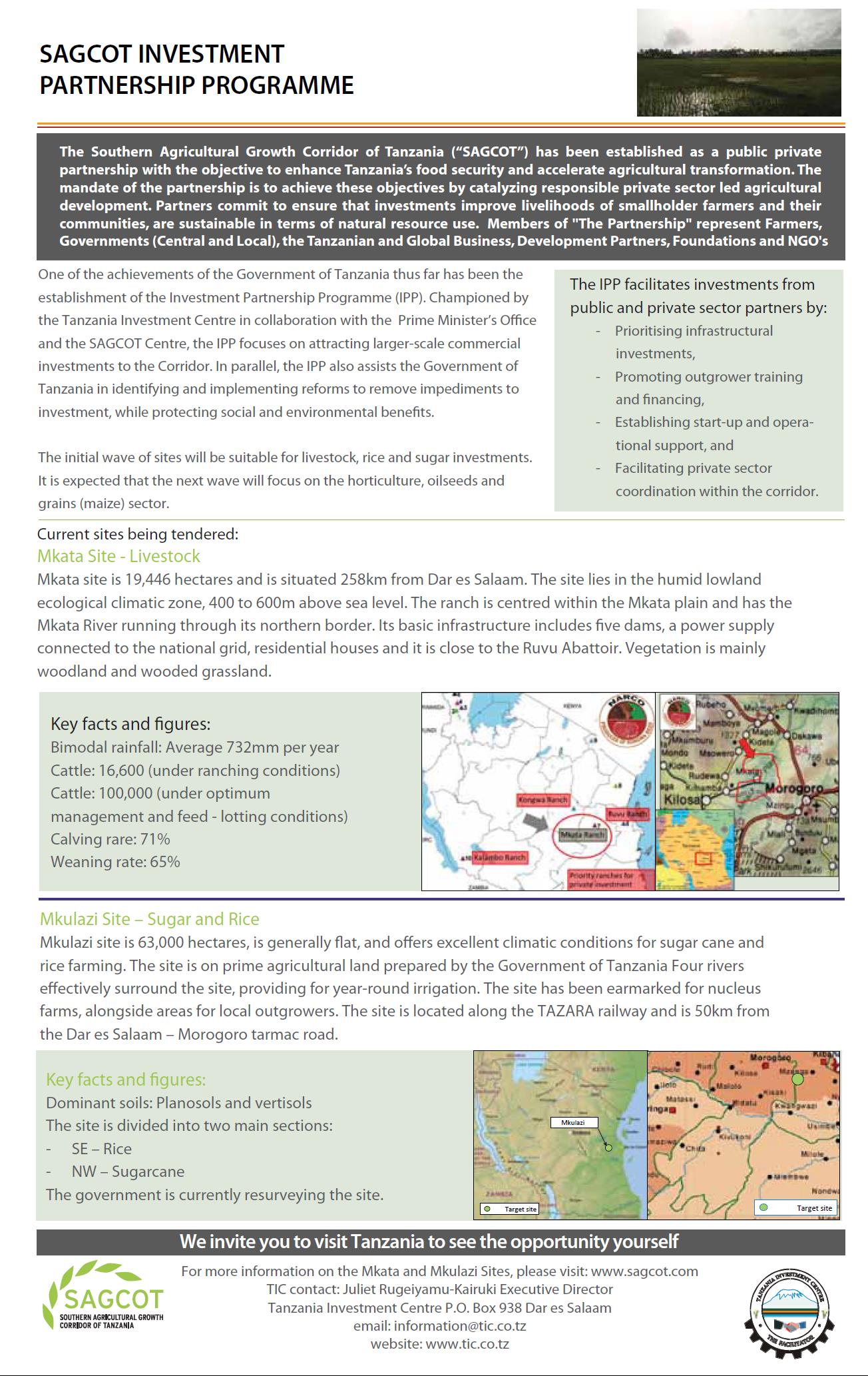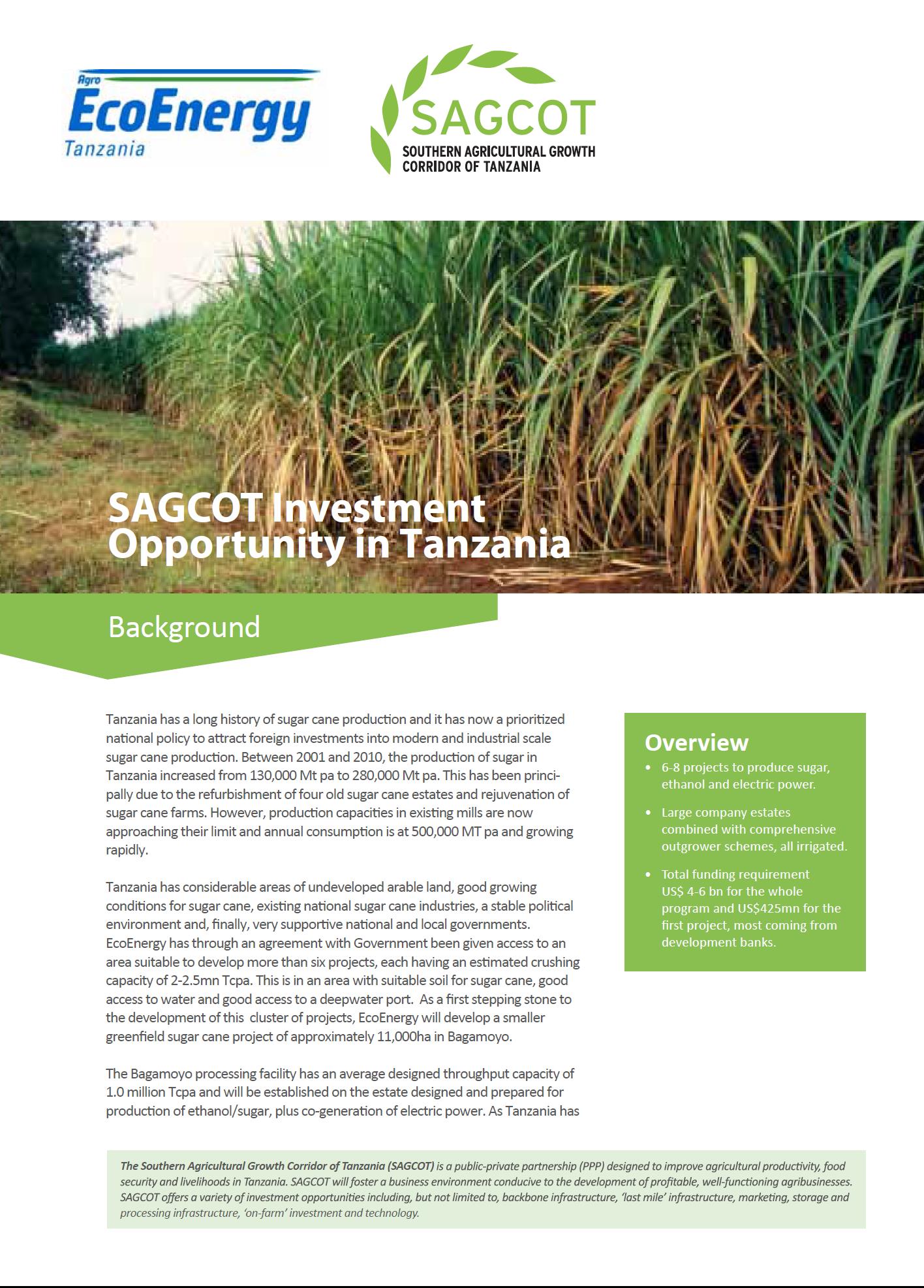Southern Agricultural Growth Corridor of Tanzania
Building on Tanzania’s Kilimo Kwanza (‘Agriculture First’ strategy), the SAGCOT Investment Blueprint describes how $2.1 billion of private investment will be catalysed over a twenty year period, alongside public sector grants and loans of $1.3 billion. The result will be a tripling of the area’s agricultural output. Approximately 350,000 hectares will be brought into profitable production, much of it farmed by smallholder farmers, and with a significant area under irrigation.

